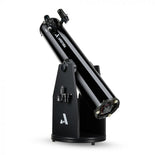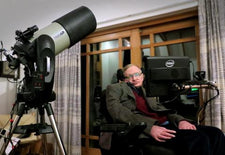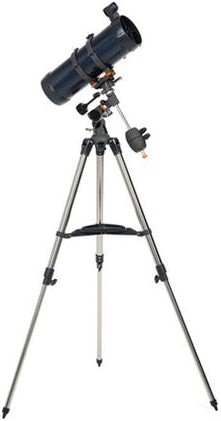Welcome to Telescopes 101
August 11, 2015
Backyard astronomy is a fun and rewarding hobby that can entertain you and your family for a lifetime. But, like many hobbies, getting started can seem a little complicated. Whether you’re trying to choose your first telescope or want to learn the basics of the night sky, our team of experts at TelescopesPlus.com is here to help. We’ve put together Telescopes 101 to answer the most common questions about astronomy and prepare you for an unforgettable night of stargazing.
How To Buy Your First Telescope - Choosing a new telescope can be overwhelming. This article covers all the key factors a new backyard astronomer should consider when shopping for a telescope. You’ll also learn why magnification is a telescope’s least important feature.
Astronomy and Telescopes: Frequently Asked Questions - In astronomy, there’s no such thing as a silly question. We take you through all the most commonly asked questions we hear from customers.
What Can You See with a Telescope? - From swirling galaxies to the remnants of exploded stars, and from craters on the Moon to a stellar nursery, the Universe is teeming with fascinating objects well within the reach of beginner telescopes. You might be surprised what you can see from your own backyard.
Using Binoculars for Astronomy - A simple set of binoculars is a great way to begin learning about the night sky. Learn how to choose a binocular for astronomical use.
Magnification and Using Eyepieces - One of the first accessories many new astronomers want to add to their telescope is an additional eyepiece. Learn how your telescope and eyepiece work together to determine magnification and how different eyepieces can change your view.
Using a Barlow Lens - A Barlow lens is a great accessory for any telescope that can increase your magnification and help you get more from your existing eyepiece collection.
Image Orientation: Why Is Everything Upside Down? – Some telescopes display images upside down, mirror reversed, or both. Learn how a telescope’s design affects image orientation and what you can do to flip reversed images. If you want to use your telescope for both land-based and astronomical observation, this is the article for you.
Telescope Mounts - More than just a tripod, a telescope mount is critical to your system’s overall performance. Learn about the different style mounts and determine which is best for you.
The Star Party: A Gathering of Telescopes - A star party is an excellent opportunity to meet other amateur astronomers and try many different telescopes. Before you go, review these basic etiquette tips so you can be the star of the star party.
Polar Alignment - Aligning your telescope to the Earth's axis can be a simple or rather involved process, depending on the level of precision needed for what you want to do. Learn the basics in this article.
Adjusting Your Eyes to the Dark - Expanding your night vision will improve your ability to view deep sky objects in your telescope. This article contains all our best tips to help your eyes adapt to the dark so you can see a whole new level of detail.
Eyepiece Formats - Replacing or upgrading your eyepieces? Your telescope may accept multiple eyepiece barrel sizes. Learn the advantages of each eyepiece format and how to be sure you have the correct size for your telescope.
Computerized GoTo and GPS Telescopes - What could be better than a telescope that finds objects for you? Read about the greatest thing to happen to telescopes in years: automatic GoTo locating and tracking. You might be surprised how affordable and user-friendly this technology can be.
Got a Nice View? The Advantages of Spotting Scopes vs. Telescopes - Do you have a beautiful view of the ocean or a patio overlooking the golf course? Many customers look to a telescope to bring these views closer when a spotting scope may be the better choice.
Observing our Closest Star, the Sun - There are several ways to safely view the Sun, including telescope solar filters, projection methods, and dedicated solar telescopes. Discover more and get ready to view the brightest star in the sky!
Filters, Filters, Filters: How Different Filters Can Enhance Your View - Have you ever wondered why astronomers use so many colored eyepiece filters? We explain how each filter brings out unique details in celestial objects.
Astrophotography: Making The Connection - Even a novice can dabble in astrophotography! Shooting the Moon and stars can be easy with your new telescope and a simple camera—even the one on your smartphone! Learn how to make the connection.
Can You See the Flag or Other Objects Left Behind on the Moon from the Apollo Missions? - Learn the answer to this very common question.
Still have questions?
If you have other questions about astronomy and telescopes, give our Telescope Specialists a call! You can reach us at (800) 303-5873.




